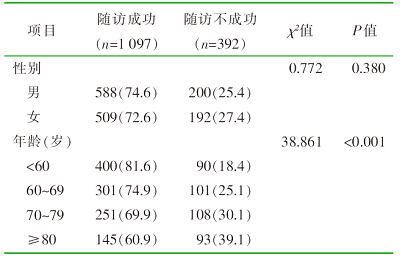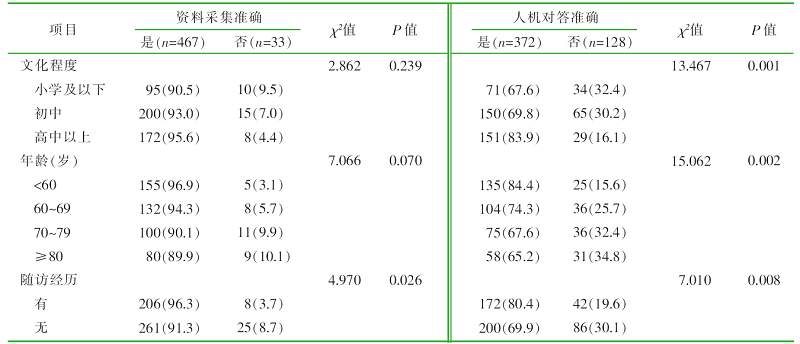| [1] |
WU Lizhen, WANG Zhaodi, ZHOU Chunxia, HUANG Lihua.
A study on the design and application of a multi-component oral exercise programme in elderly patients with oral weakness
[J]. Chinese Journal of Nursing Education, 2025, 22(2): 231-237.
|
| [2] |
WANG Li, SHANG Yajuan, ZHAO Shuli, MA Jinping.
Application of virtual reality technology combined with scenario simulation health education in elderly patients undergoing painless gastroscopy
[J]. Chinese Journal of Nursing Education, 2025, 22(1): 97-103.
|
| [3] |
CHEN Yiwen, HU Xinping, WANG Ying, MEI Hua.
Translation and validation of the Chinese version of Insulin Treatment Self-Management Scale
[J]. Chinese Journal of Nursing Education, 2025, 22(1): 109-115.
|
| [4] |
LU Di, WANG Lu, LI Baohua, QIAO Haiqin, LI Li, XUE Xiaolu, LIU Chunxia.
Application of prehospital management platform in health education for patients undergoing urinary stone surgery
[J]. Chinese Journal of Nursing Education, 2024, 21(8): 981-985.
|
| [5] |
LIU Suxiang, ZHANG Huafang, SHI Yajun, LIU Qingqing, ZHANG Ying, YANG Lili.
A systematic review of hypoglycemic fear assessment tools in adult diabetic patients
[J]. Chinese Journal of Nursing Education, 2024, 21(7): 873-880.
|
| [6] |
JIN Rongxiu, GUO Jingjing, LIU Suqiong, PENG Weiqun.
Construction of standardized nursing language for hospitalized patients with type 2 diabetes
[J]. Chinese Journal of Nursing Education, 2024, 21(7): 887-891.
|
| [7] |
LIU Dongling, QIN Yuelan, LI Zhen, ZHOU Juan, YUAN Ping.
Development and application of a dietary decision aids for type 2 diabetes patients
[J]. Chinese Journal of Nursing Education, 2024, 21(6): 686-694.
|
| [8] |
ZHENG Guanglei, ZHAO Yaning, ZHANG Wei, GU Xiaoying.
Application and effect evaluation of exercise nursing program for patients with type 2 diabetes
[J]. Chinese Journal of Nursing Education, 2024, 21(5): 587-592.
|
| [9] |
GAI Ying, LI Chang, ZHANG Jimin, GENG Xiaoting, JIANG Hailong, LI Shuying, GUO Yanwei.
Construction and application of a postpartum follow-up checklist for gestational diabetes mellitus
[J]. Chinese Journal of Nursing Education, 2024, 21(4): 389-396.
|
| [10] |
SUN Jingjing, SANG Wenfeng, JIA Guanhua, QIN Nana, WANG Yaxin, GUO Xintian, WANG Dan.
Implementation and effectiveness evaluation of self-management intervention program for young and middle-aged patients with coronary heart disease after PCI
[J]. Chinese Journal of Nursing Education, 2024, 21(2): 133-139.
|
| [11] |
YAN Zhongting, LIANG Yi, WANG Fang, SANG Yuhuan, YUAN Yuan, JU Mei.
Chinese version of hypertension self-management assessment tools based on COSMIN guidelines:a systematic review
[J]. Chinese Journal of Nursing Education, 2024, 21(1): 73-80.
|
| [12] |
ZHANG Yan, XU Rong, LIU Fang, LI Juan, HUANG Jin.
The development and prospect of the role of nurses in diabetes management in China
[J]. Chinese Journal of Nursing Education, 2023, 20(9): 1038-1044.
|
| [13] |
GUO Qin, ZHANG Xiangeng, WANG Hongyan, LIU Linfeng, LIU Shan, LIU Yunqi, ZHANG Yunqiu.
Analysis of the current situation and factors influencing the benefit finding of patients with hypertension in pension institutions
[J]. Chinese Journal of Nursing Education, 2023, 20(9): 1095-1099.
|
| [14] |
SUN Yueping, ZHOU Rong, MENG Liping, GUO Yaqiong, ZHANG Caihong, GUO Honghua.
Factors that promote and hinder clinical practice of structured education in gestational diabetes mellitus
[J]. Chinese Journal of Nursing Education, 2023, 20(9): 1100-1106.
|
| [15] |
LI Xiaohong, DING Qing, CAI Yiwei, DING Dan, ZHU Xiaoping.
Sleep quality and its influencing factors in acute brain infarction patients with type 2 diabetes mellitus
[J]. Chinese Journal of Nursing Education, 2023, 20(9): 1107-1112.
|







